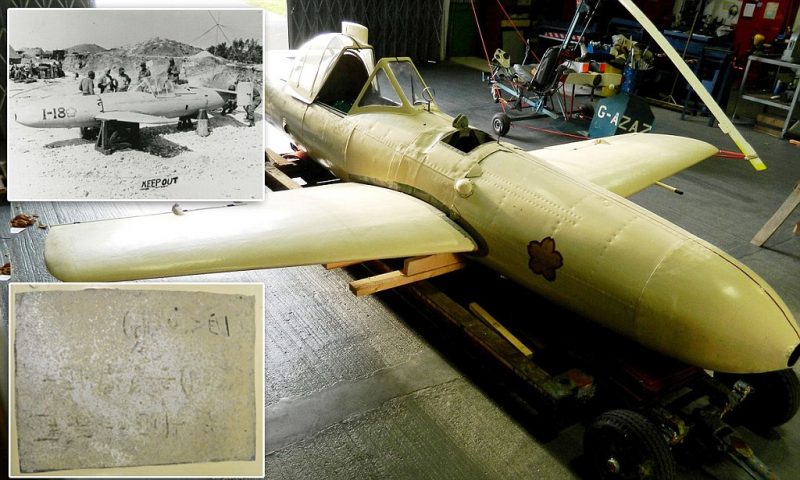The Ohka 2 plane was put on display about 30 years ago, at the Fleet Air Arm Museum in Yeovil after in was captured in the Pacific 70 years back. As it was being restored, museum experts discovered some secret Japanese codes they are now trying to work out with the help of several curators.
The experts have found two sets of Japanese codes on the side of the flying bomb, with one on the hatch cover and one on the left side. They seem to combine Japanese symbols and other unknown markings. The Fleet Air Arm Museum in Yeovil, Somerset, is now waiting for an expert who can establish the meaning of those markings. The Ohka 2 suicide planes were used in service by the Japanese troops towards the end of the war and they killed thousands of Allied seamen.
The aircraft were piloted by suicide Japanese servicemen who would fly up the plane to about 12,000ft, aim for Allied ships, release and inevitably die on impact. All the 800 aircraft ever made were able to reach 475mph and could fly for 21 miles. Cherry Blossom was the meaning of the aircraft’s name in Japanese and a picture with a flower was painted on the side of the plane, where the symbols and the markings were.
According to the Fleet Air Arm Museum, which received the aircraft from the Science Museum in London in 1982, the plane was captured by Allied troops in the Pacific. The museum is currently working on its restoration and they plan to stripe off some of the paint, to reveal the original colour and all of the symbols and markings on it, the Mail Online reports.
During suicide missions, the planes were packed with explosives and headed for Allied ships in the Pacific theatre. The attacks didn’t end until September 1945 and thousands of sailors lost their lives. Suicide pilots could better identify and hit a target than if they were to drop a bomb from a height. At first they used simple aircraft fitted with bombs and explosives but later on they developed the Ohka 2 and others like it.
Almost 4,000 Japanese suicide pilots were killed during their mission, however, reports have shown that only 15 percent of the missions were successful as in most of the cases the pilots missed their targets.
